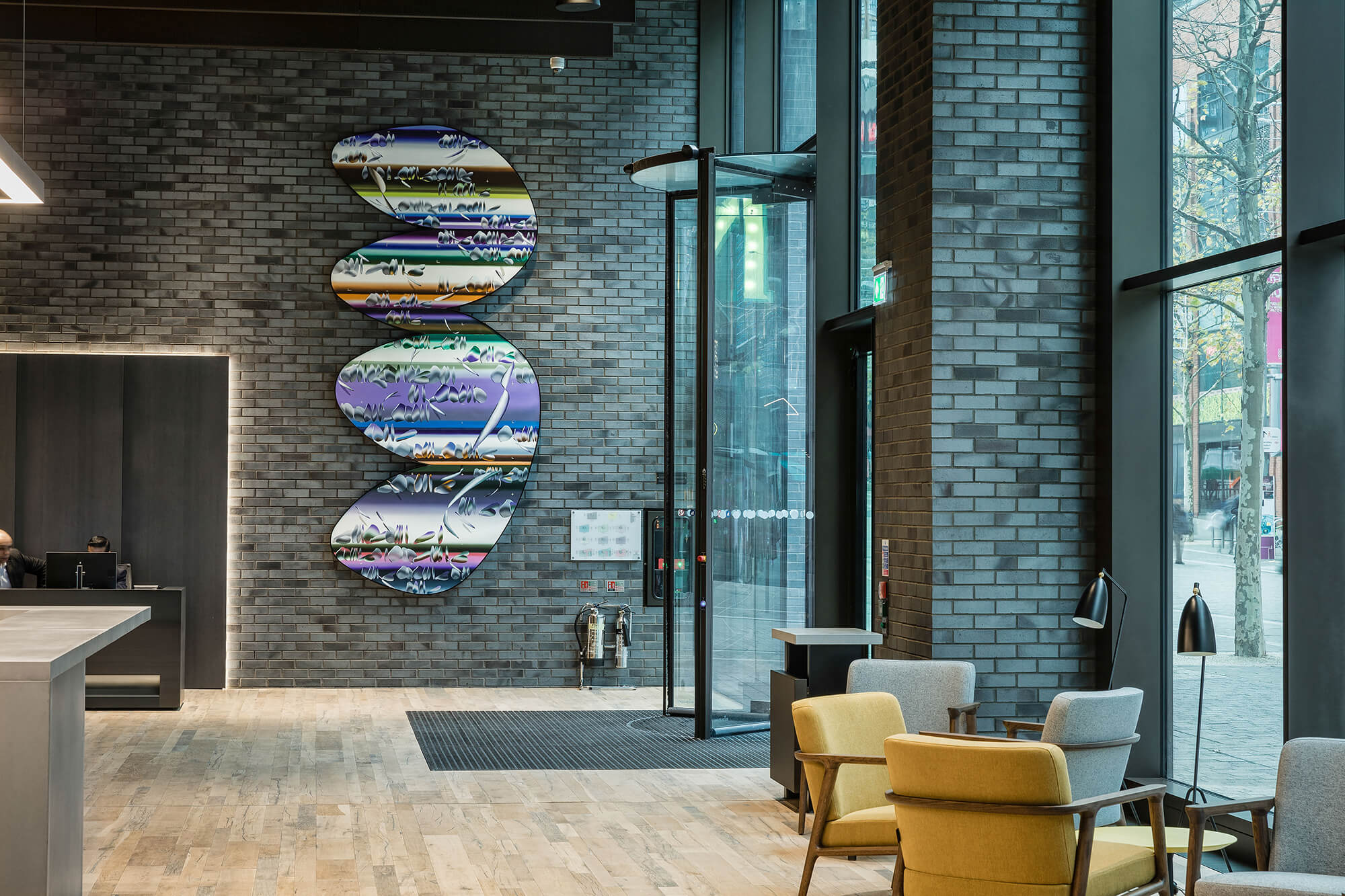


*Consultancy commissioned Vivien Zhang to devise a new artwork for the reception spaces of a mixed-use building opposite the iconic Wembley Arena. Wembley as a site of flux is key to this artwork – its culturally diverse populations, many of whom are not originally from the area, the physical use of the various venues and infrastructure, the opportunities for gathering and shared experiences and the ongoing regeneration of the area.
Commissioned by Quintain, the award-winning development team behind Wembley Park, as part of the developer’s commitment to the cultural life and legacy of Wembley, Cartographer’s Fugue is an ambitious and groundbreaking artwork for London-based painter Vivien Zhang. The title of the work plays with the double meaning of the word fugue: relating both to a musical motif in which a phrase is repeated by two or more voices and begins to change; and to a psychological state of memory loss and the urge to travel to establish a new identity.
A reflection of the digital information age and our relationship with technology more widely, Zhang’s painting acknowledges the artist’s self-described state as a digital native and third culture citizen.
It invites fellow citizen-natives to consider their relationship to space and place in the post-digital age. The unorthodox shape of the canvas is a departure for Zhang and references the 1923 Goode map projection. The Goode map is an attempt to more truthfully depict the relative sizes of landmasses than the traditional Mercator global projection, which makes Greenland (2 million km²) look as large as the African continent (30 million km²). Further abstraction addresses another map-making construct – that North is ‘up’ – and flips the profile on its side. The organic lines of the projection, which is often referred to as the ‘orange peel’ map, are presented in contrast to the crisp geometric shapes of the reception area, while reflecting the iconic Wembley Stadium’s arch.
Within the painting, the artist concentrates on depictions of a very particular shape: the Gömböc, a three-dimensional body that, when resting on a flat surface, has just one stable and one unstable point of equilibrium. The potential existence of such a shape was mathematically proven by the Hungarian scientist Gábor Domokos in 2006. For Zhang, the shape is a useful metaphor for a discussion about stability versus instability within her generation and its pursuit of a fairer, greener future through popular movements like Extinction Rebellion or the move towards veganism. Zhang paints the shape from a variety of angles, following a self-devised algorithm and its internal logic, which creates the illusion of order in the work.